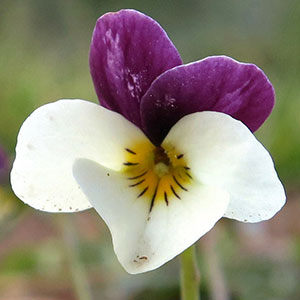Viola hallii
Viola rotundifolia
Hall's violet, Oregon violet, wild pansy
early yellow or roundleaf yellow violet, round-leaf violet, roundleaf yellow violet, violette à feuilles rondes
1–3, decumbent or ascending to erect, ca. 1/2 subterranean, glabrous, clustered on single, short, vertical, deep-seated caudex.
basal and cauline;
basal: 1–4, palmately compound, ± 2-ternate or 3-ternate, leaflets 3;
stipules adnate to petiole, forming 2 linear-lanceolate wings, unlobed, margins entire, apex of each wing free, acute;
petiole 5–8 cm, glabrous;
blade ovate to deltate, 2.8–6 × 2.6–6.5 cm, ± coriaceous, base tapered, ultimate lobes narrowly elliptic, lanceolate, or oblanceolate, 1–7 mm wide, margins entire, ciliate or eciliate, apex acute, mucronulate, surfaces glabrous;
cauline similar to basal except: stipules usually lanceolate, sometimes broadly ovate, ± leaflike, margins toothed;
petiole 1.3–6 cm;
blade 2–4.8 × 1.2–5.5 cm.
basal, 2–5, prostrate to ascending, often overlapping basally;
stipules linear-lanceolate, margins entire, apex acute;
petiole 2–8 cm, pubescent;
blade unlobed, orbiculate, reniform, or ovate, 2–12 × 1.5–9 cm, base cordate, margins crenate to serrate, sometimes glandular, ciliate or eciliate, apex rounded to acute, surfaces usually pubescent throughout or concentrated proximally on both surfaces.
2.5–11 cm, glabrous.
1.5–7 cm, usually pubescent.
sepals lanceolate to ovate, margins ciliate, auricles 0.5–1 mm;
petals: upper 2 almost black abaxially, dark reddish violet adaxially, lower 3 pale yellow, cream, or ± white, lateral 2 bearded, with deep yellow to orange patch basally, dark reddish violet-veined, lowest with deep yellow to orange patch basally, dark reddish violet-veined, 5–18 mm, spur yellow, gibbous, 0.5–2 mm;
style head bearded; cleistogamous flowers absent.
sepals lanceolate to ovate, margins ciliate or eciliate, auricles 0.5–1 mm;
petals deep lemon-yellow on both surfaces, lower 3 brownish purple-veined, lateral 2 bearded, lowest 8–11 mm, spur yellow, gibbous, 1–2 mm;
style head beardless; cleistogamous flowers on prostrate or partially subterranean rhizomes or on racemelike, nonrooting, and usually leafless branches growing from rhizome apex.
ellipsoid, 4–12 mm, glabrous.
ellipsoid, 5–10 mm, glabrous.
light brown, shiny, 3.2–3.5 mm.
beige, 1–2 mm.
= 60, 72.
= 12.
Viola hallii
Viola rotundifolia
Viola hallii was discovered on the grounds of Willamette University in Salem, Oregon, by Elihu Hall, a professor at that institution (V. B. Baird 1942). Leaves of V. hallii are similar to V. beckwithii.
(Discussion copyrighted by Flora of North America; reprinted with permission.)
N. H. Russell (1955b) stated that Viola rotundifolia is a primitive member of Viola and probably one of the ancestral species of stemmed yellow violets of North America. Russell (1965) stated that morphologically, V. rotundifolia is one of the most invariable violets and suggested that its nearest relative is V. orbiculata.
(Discussion copyrighted by Flora of North America; reprinted with permission.)


